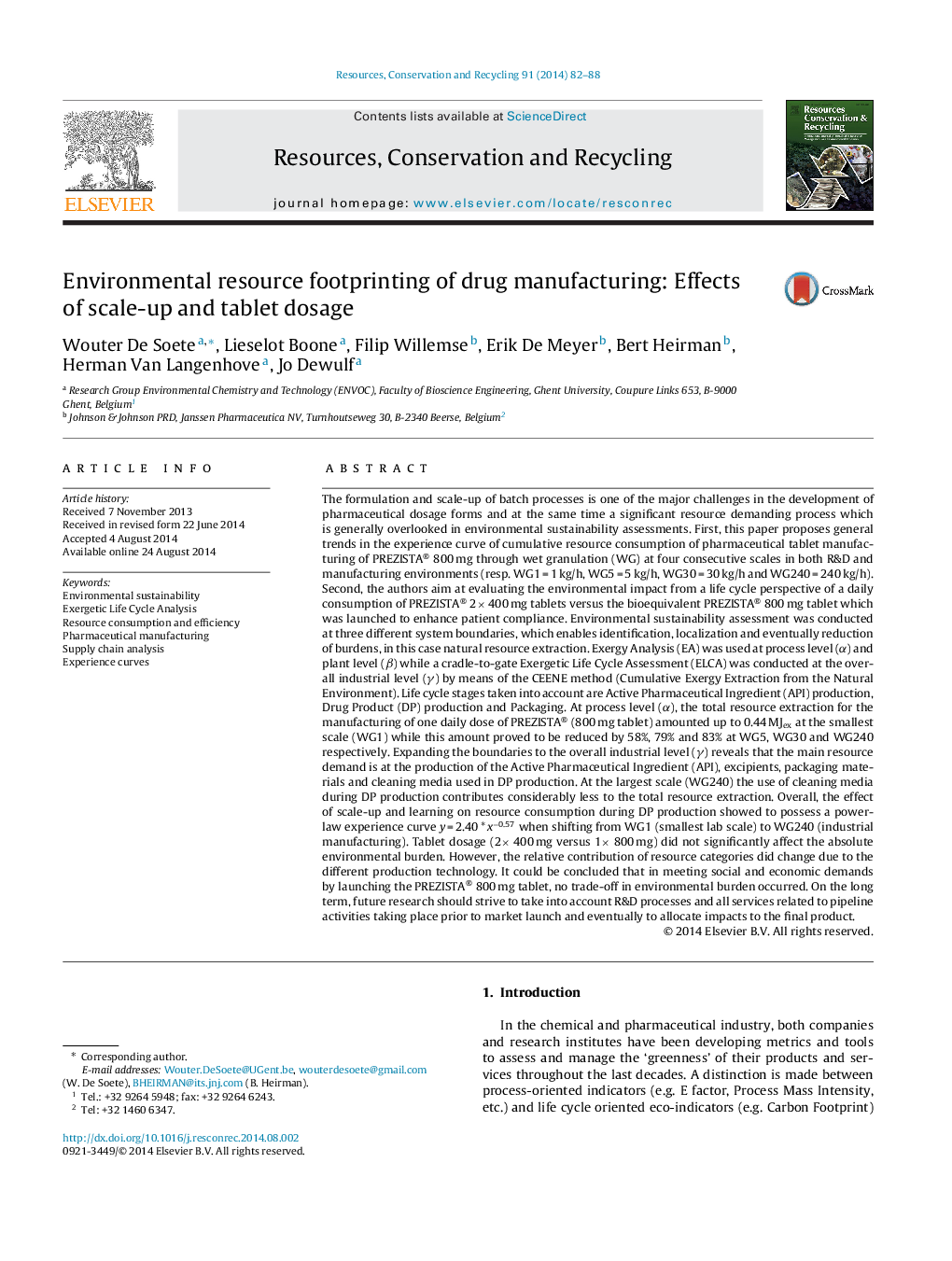| کد مقاله | کد نشریه | سال انتشار | مقاله انگلیسی | نسخه تمام متن |
|---|---|---|---|---|
| 1062863 | 1485698 | 2014 | 7 صفحه PDF | دانلود رایگان |
• Pharmaceutical tablet manufacturing was analysed from a resource point of view.
• Effects of batch scale-up and tablet dosage on resource consumption were studied.
• Resource consumption proved to decrease sharply in scaling up batch sizes.
• Tablet dosage did not significantly affect resource consumption in this case.
• Constructing experience curves enables considering eco indicators in decision making.
The formulation and scale-up of batch processes is one of the major challenges in the development of pharmaceutical dosage forms and at the same time a significant resource demanding process which is generally overlooked in environmental sustainability assessments. First, this paper proposes general trends in the experience curve of cumulative resource consumption of pharmaceutical tablet manufacturing of PREZISTA® 800 mg through wet granulation (WG) at four consecutive scales in both R&D and manufacturing environments (resp. WG1 = 1 kg/h, WG5 = 5 kg/h, WG30 = 30 kg/h and WG240 = 240 kg/h). Second, the authors aim at evaluating the environmental impact from a life cycle perspective of a daily consumption of PREZISTA® 2× 400 mg tablets versus the bioequivalent PREZISTA® 800 mg tablet which was launched to enhance patient compliance. Environmental sustainability assessment was conducted at three different system boundaries, which enables identification, localization and eventually reduction of burdens, in this case natural resource extraction. Exergy Analysis (EA) was used at process level (α) and plant level (β) while a cradle-to-gate Exergetic Life Cycle Assessment (ELCA) was conducted at the overall industrial level (γ) by means of the CEENE method (Cumulative Exergy Extraction from the Natural Environment). Life cycle stages taken into account are Active Pharmaceutical Ingredient (API) production, Drug Product (DP) production and Packaging. At process level (α), the total resource extraction for the manufacturing of one daily dose of PREZISTA® (800 mg tablet) amounted up to 0.44 MJex at the smallest scale (WG1) while this amount proved to be reduced by 58%, 79% and 83% at WG5, WG30 and WG240 respectively. Expanding the boundaries to the overall industrial level (γ) reveals that the main resource demand is at the production of the Active Pharmaceutical Ingredient (API), excipients, packaging materials and cleaning media used in DP production. At the largest scale (WG240) the use of cleaning media during DP production contributes considerably less to the total resource extraction. Overall, the effect of scale-up and learning on resource consumption during DP production showed to possess a power-law experience curve y = 2.40 * x−0.57 when shifting from WG1 (smallest lab scale) to WG240 (industrial manufacturing). Tablet dosage (2× 400 mg versus 1× 800 mg) did not significantly affect the absolute environmental burden. However, the relative contribution of resource categories did change due to the different production technology. It could be concluded that in meeting social and economic demands by launching the PREZISTA® 800 mg tablet, no trade-off in environmental burden occurred. On the long term, future research should strive to take into account R&D processes and all services related to pipeline activities taking place prior to market launch and eventually to allocate impacts to the final product.
Figure optionsDownload as PowerPoint slide
Journal: Resources, Conservation and Recycling - Volume 91, September 2014, Pages 82–88
